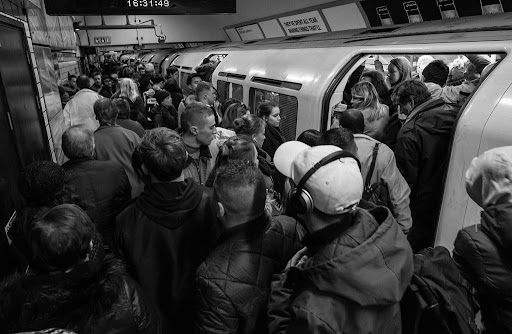Police have recorded a UK wide record level of reported rape offences, fuelled in part by a 10% annual rise in rape in London.
ONS data reveals that in the 12 months to September 2022, the official figure of 63,136 cases of rape is the highest on record and accounted for 37% of the 170,973 sexual offences in the 12 months to the end of September last year.
Rape Statistics in London
London recorded 8,406 in the same reporting period, accounting for one in eight of the national rape cases reported. This is only 10 cases short of London’s highest-ever recorded in 2019.
Included in the increase of rape cases in London (769 cases increase over 12 months), is the 41% rise in rape by knifepoint, taking this figure to 154. The highest-ever number of victims (mostly women) were raped under threat of attack by a bladed weapon.
Overall, there were 22,026 sexual offences in this 12-month period to September 2022, however, the latest up-to-date data shows that this figure is actually 25,065 in one year (March 2022-February 2023).
Sexual offences, of which rape is the most egregious, represent a significant threat and challenge to Londoners and disproportionately affect women to an extreme extent.

Sexual Assault Statistics in the UK
British Transport Police addressing sexual offences on London’s transport networks.
Background: In the past few months, the British Transport Police have run online and offline public campaigns aiming to address violence against women and girls in the country. Transport networks have been identified as especially high-risk areas for violent and non-violent sexual offences from strangers.
Analysis: Online chatter and reported incidents have also highlighted ongoing risks in transport hubs where London residents, employees or visitors have been targeted. Reports highlight issues with excessive staring, harassment (catcalling or unwanted advances), groping and up-skirting, stalking and violent assaults.
A 2020 survey found that 55% of women and 21% of men had experiences harassment or assault on public transport in London. Public transport, especially in busy stations like Finsbury Park where people are rushing and pushing around, can be a place where harassers try to take advantage.
Sexual harassment affects not only those who are directly targeted, but also how safe individuals feel when travelling. A 2019 study found that women were nearly twice as likely as men to mention personal safety as a barrier to walking and using public transport.

What Percentage of Women Are Sexually Assaulted
- Transport for London data released in January 2023 showed there had been an 81% increase in sexual harassment of women and girls in the past year.
- Crime generally was up 8% despite ridership being down 21% from pre-Covid-19 levels.
- Chances of being a victim of crime increased from 8.3 to 11.5 per million passenger journeys.
- There were 476 sexual offences on London bus services. The majority of victims were female, aged between 12 and 30 years old.
Incidents occur on transport services, often where predators take advance of dense crowds to commit crimes discretely, and on less heavily populated services during evening/night hours targeting lone individuals.
For example, in the past week, police stated that a 27-year-old male had been charged for sexual assaults targeting females in north London. Three cases were investigated all within the Euston area, between January and February 2023.
There are also risks in and around transport hubs, where lone individuals can be harassed or followed.
Addressing ‘other sexual offences’ or non-violent crimes can be crucial, not least because of the impact these incidents have on victims psychologically, but also due to the risks of an escalation in threat shifting to violent offences. For example, cases of staring, harassment and stalking can lead to victims being followed and assaulted while travelling alone on transport networks.
There are vulnerabilities in security on buses, especially there is little or no police presence, limited CCTV and limited police and security between stops.
There are also significant vulnerabilities when lone individuals leave transport networks to walk home or to the office.
These security risks are relevant to all organisations in regard to the health, safety and well-being of employees while on-site, travelling between sites and home, and in lone-worker scenarios.

How to Prevent Sexual Abuse: Creating a Safe and Secure Workplace
- A well-communicated company guideline/doctrine on how to keep an eye out for suspicious sexual behaviour or targeting and the correct anonymous reporting channels.
- An out-of-office culture of protection and vigilance when socializing with colleagues or clients.
- Training for all staff on safer ways to get home, travel to and from transport hubs and methods to avoid being targeted.
- These can include but are not limited to; not taking shortcuts at night, talking on the phone, staying in busy well-lit areas (where possible) making someone know you feel threatened or feel as though you are being followed, and utilizing industry initiatives such as Ask for Angela when visiting venues of risk.
Recommendations
- Reporting: British Transport Police encourage the use their app ‘Railway Guardian’ and the reporting line ‘61016’ where both victims and witnesses can discretely report incidents both while they are happening and after.
- Active bystanders: Campaigns encourage intervention and reporting from witnesses. This can be direct or indirect, to simply engage with potential victims, ask questions or ask for help with an unrelated matter to show presence.
- Raise awareness: Organisations and employees should continue to raise awareness about the risks of sexual offences on transport networks and in London generally. Provide support and ensure employees are aware of reporting methods.
Related: 10 Most Dangerous Areas in London




